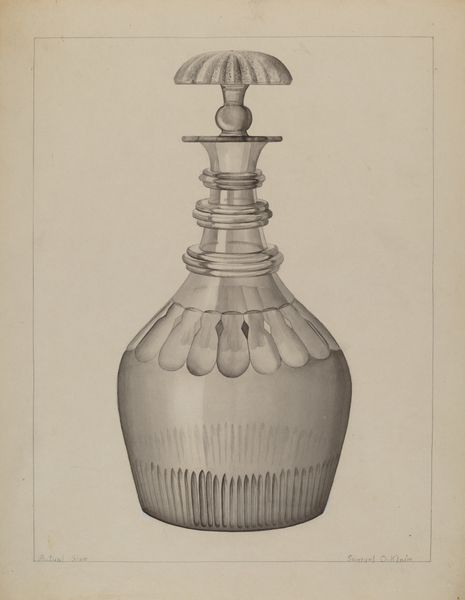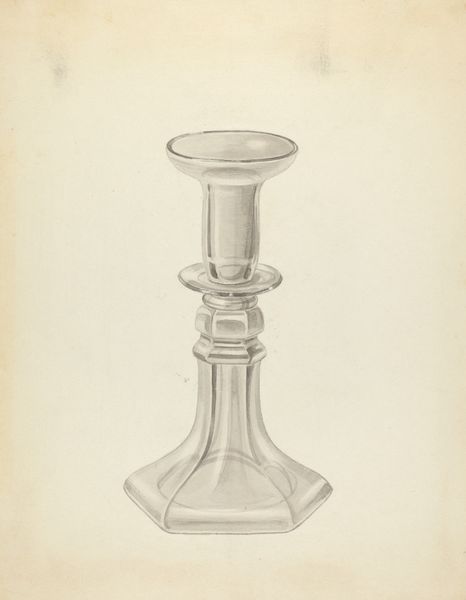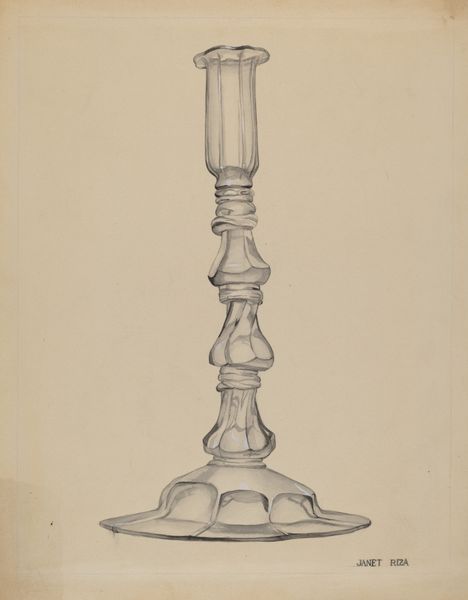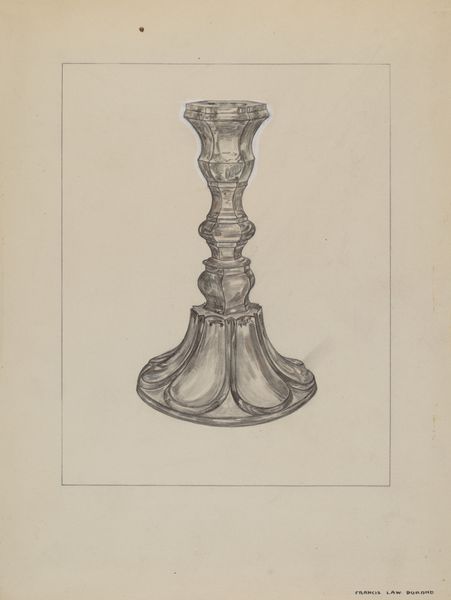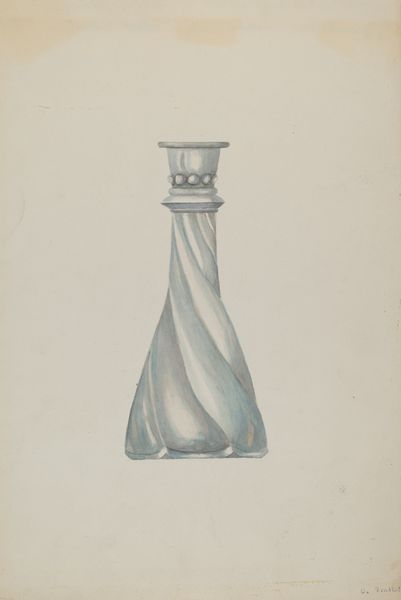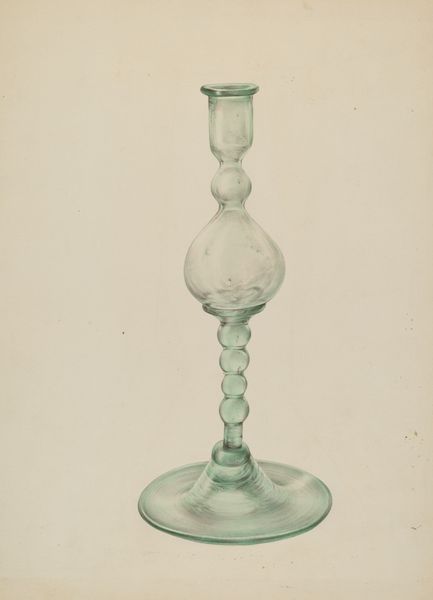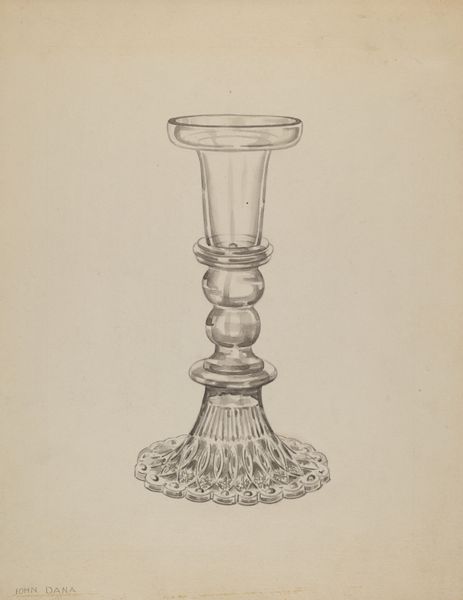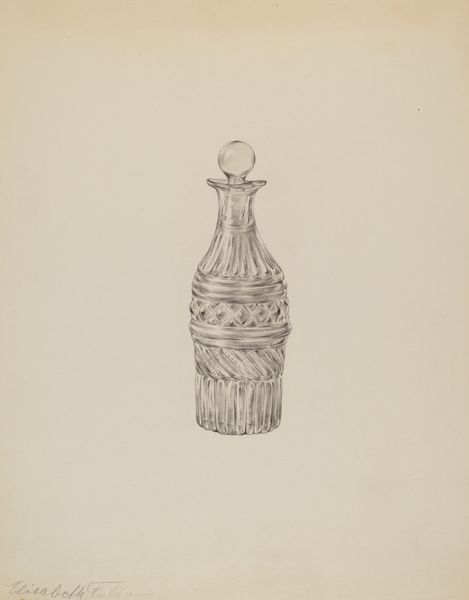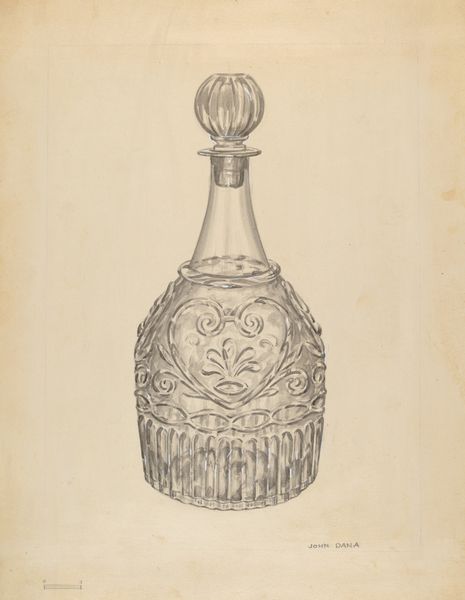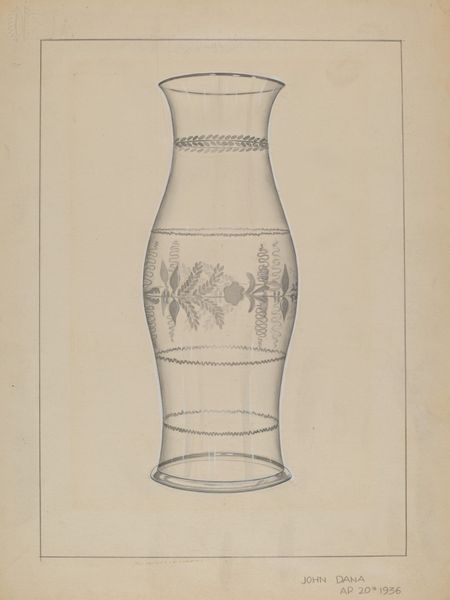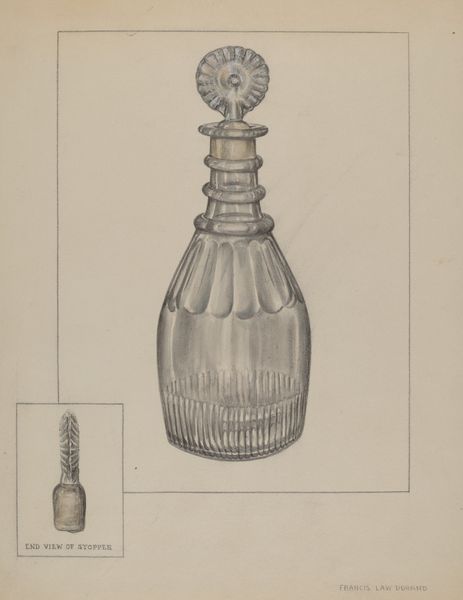
drawing, pencil
#
pencil drawn
#
drawing
#
aged paper
#
toned paper
#
light pencil work
#
pencil sketch
#
sketch book
#
personal sketchbook
#
pencil
#
sketchbook drawing
#
pencil work
#
decorative-art
#
sketchbook art
#
realism
Dimensions: overall: 35.8 x 28.2 cm (14 1/8 x 11 1/8 in.)
Copyright: National Gallery of Art: CC0 1.0
Curator: The way light glints off this glass is just exquisite! Editor: Indeed. We're looking at a drawing entitled "Glass Wine Decanter" by Erwin Schwabe, likely sketched around 1937. Notice the aged, toned paper – typical for a sketchbook of that era. It's all rendered in pencil, quite delicately. Curator: Delicately, yes, but with such confident strokes. You can practically feel the coolness of the glass and see the skilled labor needed to create a real glass version of this. Do you think this might be preparation for a manufactured object? Editor: Almost certainly. Considering the timing and the style, it aligns with the prevalent design aesthetic of the period – hinting towards mass-produced luxury items. Think about how interwar economic pressures may have shaped both the market for and the means of production of such decorative pieces. Curator: Exactly. We see it reproduced on paper, a readily available and affordable material but destined to be transferred onto what would hopefully become glass made for purchase and display. There is something really thought-provoking about that chain of processes, from concept to commodity, embedded in this image. Editor: I find myself contemplating its reception by the public. Wine decanters in that period often served a social function; part of a display of domestic comfort and maybe even subtle aspirational messaging. Did owning objects such as this suggest certain lifestyle aspirations? Curator: I think you’re spot-on. These aren't just vessels for wine; they are objects of art meant to communicate social status. Look closely and note the attention given to the decanter’s stopper in Schwabe's sketch. It's a very elegant rendering. The craftsmanship represented must have had great meaning. Editor: The sketch itself acts almost as propaganda for a lifestyle centered around refinement and social performance. It also prompts thinking around class, as only some would be able to have these objects in their homes. Curator: Well, looking at it this way really sheds a different light on such a commonplace image! It underscores just how many stories and values an object can come to carry. Editor: Precisely! It’s a reminder to appreciate the power dynamics subtly embedded within the everyday imagery that we often overlook.
Comments
No comments
Be the first to comment and join the conversation on the ultimate creative platform.
